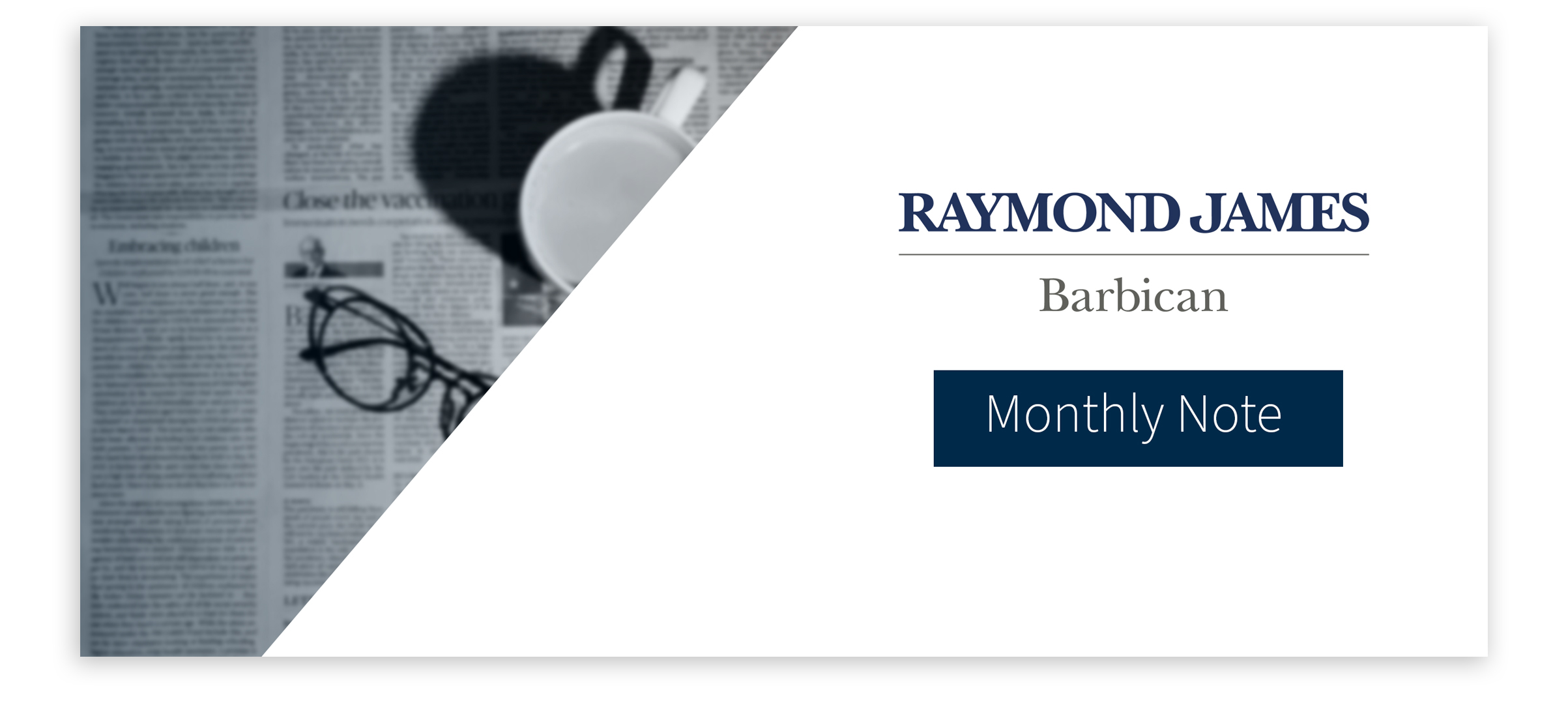The Month In Markets – December 2022
Investors hoping for a Santa Rally this December were left disappointed. However, after a strong October and November global equities did still post a positive final quarter. The year in itself will be remembered as an extremely challenging period, with weakness in both equities AND bond markets.

The Santa Rally – the so-called phenomenon of equity markets performing well in December does actually have some supporting evidence. Analysis of monthly returns dating back to 1926 (for US stocks) showed that the month of December had the highest probability of producing positive returns. For those interested, September was the month with the lowest probability of positive returns (although this was still above 50%).
As the chart above shows, equity markets across the globe trended downwards in December, with the US market being the worst performer. Unpacking what happened, it seemed the US Fed were once again the main drivers of markets.
US inflation data, which was released mid-month, carried on the very recent trend of slowing at a faster pace than the market anticipated. US CPI for November (released in December) showed year-on-year inflation at 7.1%, lower than the expected 7.3% and the previous reading of 7.7%. A month earlier, US equity markets rose around 5% in one day on similar inflation data, however, this month there was no equivalent response. Coupled with lower inflation was a reduction in the size of interest rate hikes from the US Fed, who raised rates by 0.5%, as opposed to the recent 0.75% hikes. It’s fair to say that many investors would have expected lower inflation and smaller interest rate hikes to be positive for equities. However, it was US Fed Chair Powell’s speech that spooked markets and poured cold water on the Santa Rally. He stated that he did not believe that policy was yet restrictive enough (therefore meaning further interest rate hikes would occur) and that the central bank would need to be very confident that inflation was on the right path before considering any interest rate cuts. Importantly, the projections from the US Fed for where policy will be in 2023 showed they didn’t expect to cut interest rates this year. For investors who had positioned for a ‘Fed Pivot’ this hawkish language was bad news and we witnessed both bonds and equities sell-off.
Moving to China, we saw the country begin to ease controls and strict lockdown measures at the start of the month. Officially, the Chinese leadership team stated that the Covid-19 variants were becoming weaker and therefore it was safe to remove certain restrictions. However, after recent widespread protests there is a view that Xi Jinping was forced to change his stance given the level of these civil uprisings. While China re-opening should be good for economic growth, there are lingering concerns that a spike in cases could lead to further COVID variants and pose a global risk once more. Leaked reports from the country showed that they estimated 250 million people had caught COVID in the first 20 days of December. Many countries including the US have since implemented a China covid rule, ensuring travelers undertake mandatory testing before arrival.
There were interesting moves in the energy markets in December. The crude oil price dipped below $75 a barrel and was lower than it was during the start of the year (before Russia invaded Ukraine). The regular drivers amongst the readers will have noticed falling prices at the pumps – the writer can now find unleaded petrol below £1.40 a litre! The falling petrol prices should help the consumer, while it will also act as a deflationary force in upcoming inflationary data this quarter. European natural gas prices were extremely volatile during the month. With a cold snap initially sweeping across Europe we saw a spike in natural gas prices as consumption picked up and concerns mounted regarding suitable storage levels. However, the cold snap was immediately followed by a period of much more mild weather throughout Europe, and this led to a sharp reversal in natural gas prices. So far it seems the concerns of Europe running out of gas have been overdone and storage levels are at seasonal highs currently (88% full). Lower energy prices across Europe will have a positive impact on both consumers and businesses as we head into 2023.
As we look ahead into 2023 and beyond there is early evidence of inflation peaking and indeed beginning to trend down and this is likely to be a positive for asset prices. We believe it is unlikely that interest rate policy across most developed markets will be as aggressive in 2023 as it was this year, with the inflation shock now largely behind us and heavily priced in to assets. That being said, interest rates, at current levels will still pose headwinds for consumers and the housing market and as such we have held off increasing risk in portfolios, despite a better inflation outlook and much lower asset valuations. While diversification was hard to come by in 2022, with equities and bonds both falling, we believe correlations will begin to normalise going forward, however it is also important to hold additional asset classes for diversification, such as gold and infrastructure.
Appendix
5-year performance chart

Risk warning: With investing, your capital is at risk. Opinions constitute our judgement as of this date and are subject to change without warning. Past performance is not a reliable indicator of future results. This article is intended for informational purposes only and no action should be taken or refrained from being taken as a consequence without consulting a suitably qualified and regulated person.
Andy Triggs
Head of Investments, Raymond James, Barbican

